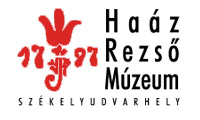Kovács Petronella (szerk.): Isis - Erdélyi magyar restaurátor füzetek 17. (Székelyudvarhely, 2017)
Domokos Levente - László Károly: A berethalmi evangélikus templom sekrestyéjében álló kandalló restaurálása
became dirty and contaminated unevenly. Although the semicircle shape of the upper edge confirmed that the ornamental frame was not part of the painting originally, its sustention seemed the right decision. Its condition was very weak, the wood parts became spongy. Several gaps and former repairs could be seen on both sides of it. The conservation of the painting began with dusting and with taking oif the picture from its frame and from the stretcher. The softening of the glue of the repair patches on the back side was done with a gel made from hydroxypropyl cellulose (Klucel G) and ethanol. The unevenness of the canvas was smoothed by ironing between silicon release papers and then by pressure with cold marble sheets. The contaminations and the repairs made by overpainting were removed with the mixture of ethanol, turpentine, linseed oil and ammonium-hydroxide, and by mechanical method. For adhering the relining canvas to the original one Beva 371 synthetic resin was used. The picture was fixed back to the conserved stretcher and then its surface was covered with a varnish made of 25% dammar resin dissolved in turpentine. For gap filling of the deteriorated areas mixture of fish glue and chalk was used. The aesthetic restoration by invisible retouching was made with Maimeri Restauro retouching paint. As a final coating the painting got an acrylic varnish by spraying. After the removal of the overpainting layers from the frame it turned out that the original metal appearance of the surface was almost completely missing. The wood was consolidated with the solution of Mowilith DMC 2, the larger gaps of the frame were filled up with wood, while the smaller ones with Balsite two component epoxy resin. The aesthetic restoration was carried out with the help of water-based acrylic paint and Masserini solventbased bronze paint with high metal-pigment content. Finally Masserini acrylic spray was applied as a protective coating. Eva Puskás Restorer László Sulyok Restorer Translated by: Márta Kissné Bendefy Levente Domokos - Károly László Conservation of the fireplace of the sacristy of the Lutheran church at Berethalom In the last two decades, the interest has increased towards the Transylvanian monuments. On the other hand, the rejoicing development of tourism can damage the furnishing of the buildings. This happened with the heating device in the sacristy of the fortified church of Beretfalva, which is inscribed on the List of World Heritage. Here the damage was caused because of the increased movement of the floor, generated by the big number of visitors. The fireplace divided into two parts probably built at the end of the 18th century or at the beginning of the 19th century, was constructed onto a platform framed with ornate wooden timbers and standing on legs. Some tiles of it had been moved and the front had been caved in partly. The remaining elements were burdened with the heavy roof, and so more and more cracks appeared on them. Because the floor went down underneath the platform built in front of the firebox, the platform leaned forward. To stop the leaning forward of the fireplace the opening of the firebox was reduced to its half in the past to reduce the pressure on the side wall and to give extra support to the front wall. Some of the decays were caused by the former use and improper repairs. The fireplace was often overheated resulting a crack between the tiles on the right wall. For the conservation, partial taking apart of the fireplace was necessary. In the course of dismantling several details of the original manufacture technology could be observed, such as the marks of tools on the back side of the tiles. Along the alignments, the variant layering of the different sides could be seen. On the back side of some tile sheets there are marks of cutting. The tiles left on the fireplace and the ones which were taken apart were cleaned partly mechanically. The stubborn contamination (lime, mortar made of lime and cement, smut) could be removed only after soaking. The gluing of the broken tiles, the minor replacements and the imitation of glaze was made from Paraloid B72 dissolved in nitro thinner in 15-70% concentration, depending on the task. This synthetic product was chosen because with its use the different layers of repair were compatible with each other. For filling the gaps Paraloid B72 was used filled with red clay/engobe, that layer was covered with Paraloid B72 filled with ground white kaolin, on which the glaze imitation made from Paraloid B72 was applied. The repair of the tiles, which had been incomplete, was made with white, iron-free, fireproof clay, thinned with fireclay, which corresponded to the original use of materia] but it differed from it in colour. The gluing of the burnt, glazed replacement pieces to the original ones was made with Paraloid B72. For the retouching of the surfaces after gluing Paraloid B72 was used coloured with mineral pigments. The work was completed with the reassembly of the elements of the fireplace putting the tiles to their original places. Levente Domokos Restorer MA Károly László Ceramist Translated by: Márta Kissné Bendefy 183
